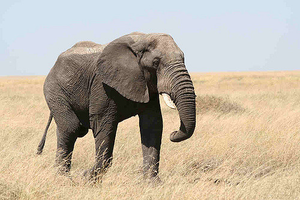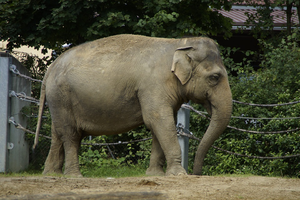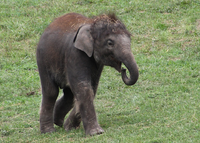Key Stage 1
Meaning
An elephant is a large grey animal with 4 legs and a trunk.
About Elephants
- The trunk on an elephant is a very long nose.
- An elephant can grow two very long teeth called tusks.
Examples
|
|
|
| This is a picture of an African elephant.
|
This is a picture of an Indian elephant.
|
Key Stage 2
Meaning
An elephant is a grey mammal with 4 legs and a trunk.
About Elephants
- As a mammal elephants:
- A young elephant is called a calf.
- Elephants usually live in a grassland or savanna habitat.
Lifecycle of an Elephant
| Foetus
|
Young
|
Adult
|
|
|
|
|
| An elephant starts its life inside the mother getting its food through the umbilical cord.
|
When a elephant has been born it cannot eat so it gets milk from its mother to survive. This 'young' is an elephant calf.
|
An adult elephant is mature and can have it's own offspring.
|
Adaptations of Elephants
| Adaptation
|
Purpose
|
| A trunk
|
To pick leaves from trees and to take in water for drinking.
|
| No hair
|
To keep cool in its hot habitats.
|
| Tusks
|
To defend against predators.
|
Key Stage 3
Meaning
An elephant is a grey mammal with 4 legs and a trunk.
About Elephants
- As a mammal elephants:
Adaptations of Elephants
| Adaptation
|
Purpose
|
| A trunk
|
To pick leaves from trees and to take in water for drinking.
|
| No hair
|
To keep cool in its hot habitats.
|
| Tusks
|
To defend against predators.
|
| Wide feet
|
So it does not sink in mud or sand.
|
Key Stage 4
Meaning
An elephant is a grey animal with 4 legs and a trunk in the class; mammal.
About Elephants
- As a mammal elephants:
Adaptations of Elephants
| Adaptation
|
Purpose
|
| A trunk
|
To pick leaves from trees and to take in water for drinking.
|
| No hair
|
To keep cool in its hot habitats.
|
| Tusks
|
To defend against predators.
|
| Wide feet
|
So it does not sink in mud or sand.
|
Beyond the Curriculum





